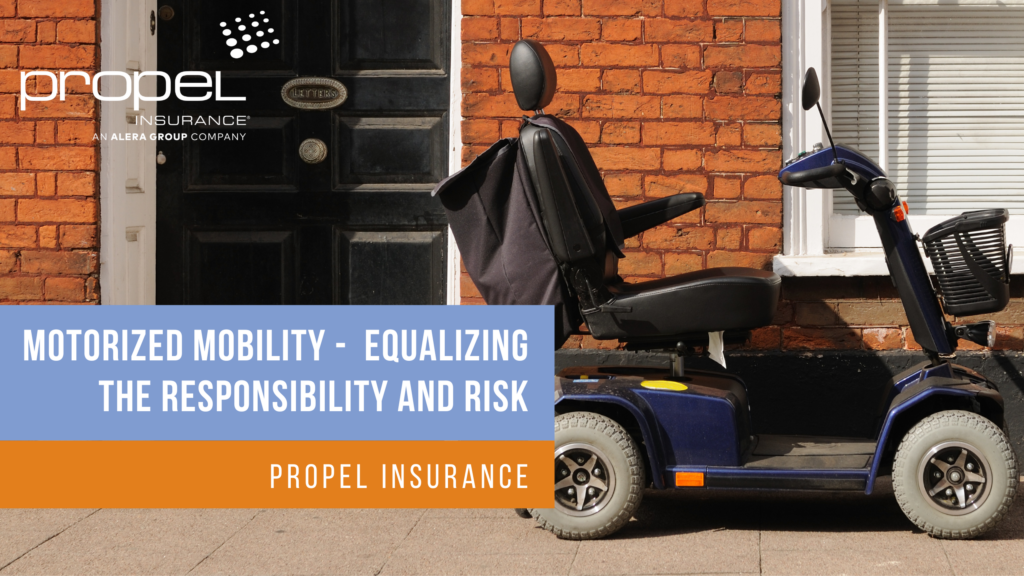Propel provides innovative insurance solutions to thousands of companies across the country. We make it our business to know your world inside and out.
Insights, Senior Care
Motorized Mobility – Equalizing the Responsibility and Risk
Enabling residents to maintain their independence by using a powered mobility aid is obligatory to some degree by both state and federal law. As these devices become more common and more powerful the safety and legal issues create dividing opinions of the right of the individual and the safety of the community.
The ability to operate safely, the power and speed of the device, and the power source should all be considered for policy development. The policy should include how safe operation will be determined in general, safety rules of use in and out of doors, parking areas, and maintaining equipment.
Much of this responsibility comes with ownership and should be addressed before a new admission with questions regarding the use of a powered device, the type and the ability to control. Conversations of safe practice should also be a part of reassessment at the time of a determined individual need after admission, or at the time of an incident.
If the risk of use is not clearly considered and outlined by protocol, the community will own this risk and its many facets.
Operation of any motorized device should begin with an assessment to demonstrate skills for maneuvering and understanding of the community’s safety rules, and this may require updating with any significant change of physical condition or cognition.
All the associated risks should be considered such as speed, size, lending and sharing, and what powers the device. Many mobility scooters can now reach a speed of 8 to 10mph, and with speed often comes an increase in size of lithium batteries.
The fire risk of these batteries should be realized and planned for in admission discussions, maintenance inspections, and disaster drills. Battery generated fires often cannot be controlled with the normal fire suppression systems and release toxic fumes as they burn out. As of now there are no National Fire Protection Association standards dealing with lithium batteries specifically for healthcare, but this will be coming soon as insurance underwriters are expecting proactive steps to be taken to minimize this risk.
Your policy of who can safely operate, what kind of device, upkeep, and where stored should be tied to legitimate general safety concerns and for property damage including fire.
1. Develop a protocol for use and safe operation of motorized devices.
- Certify the need before the admission.
- Outline clear and concise safety rules for operation and speed.
- Include expectations for maintenance and storage in admission agreement and update with assessment service plan reviews.
- Assess ability to safely operate and control motorized device routinely and with change in status.
- Set a speed limit for acceptance and use (no faster than ambulatory walking speed).
- Determine primary user and discourage shared use.
- Determine safe common area for parking of multiple devices.
- Include who will maintain equipment.
2. Develop a lithium-ion battery powered device inspection program.
- The preventive maintenance inspection program should be clear as to who will inspect and maintain equipment.
- Ensure consent/permission is given to residents to use, operate and store any mobility device with a lithium battery.
- Establish requirements for maintaining the equipment in line with manufacturer recommendations.
- Outline how and when batteries will be inspected for physical damage, excess heat, blistering, corrosion, leaking or swelling.
- Require all devices to be parked out of exit path.
The selected resources are:
-
Motorized Mobility Aids: Wheelchairs, Carts, and Scooters sample policy and procedures for Assisted Living and Skilled Nursing.
-
Safe Motorized Mobility Aid Assessment is a checklist to help determine if resident is able to safely use motorized mobility aids.


